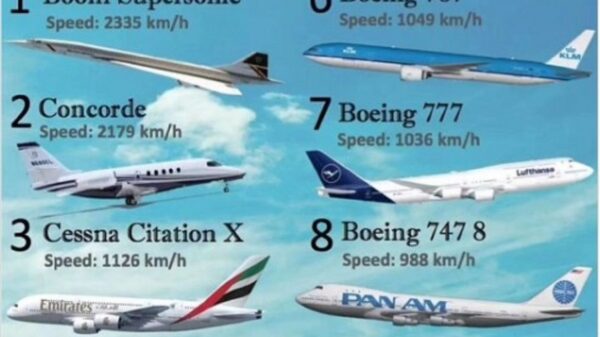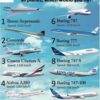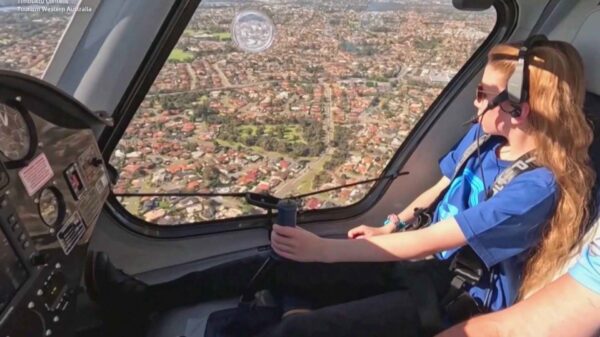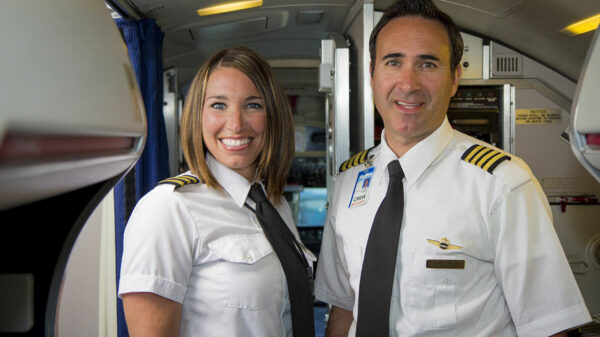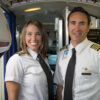In a strategic move to fortify the aviation landscape, Captain Musa Nuhu, the Director-General of the Nigeria Civil Aviation Authority (NCAA), has unveiled the compelling rationale underpinning the recent elevation of the minimum aircraft requisites for securing an Air Operator’s Certificate (AOC) – a pivotal green light for airlines to operate.
Before the dawn of the Nigeria Civil Aviation Regulations (Nig. CARs) 2022, aspiring carriers merely needed a duo of aircraft to clinch their AOC from the apex aviation regulator in Nigeria.
However, a paradigm shift has transpired, with the new mandate dictating a six-aircraft baseline. This regulatory pivot has triggered a symphony of critiques, notably from industry stalwarts who perceive it as draconian, a purported deterrent to budding contenders.
Speaking exclusively to aviation correspondents through the Zoom network on a recent Thursday evening, Nuhu, with resounding clarity, expounded on the pivotal objective motivating this paradigm shift. He avowed that the essence is to instill heightened accountability within airline operators, fostering a commitment to their clientele.
Nuhu’s impassioned discourse zeroed in on the financial fragility that has often plagued homegrown airlines, casting a shadow of avoidable flight disruptions across the annals of Nigerian aviation. For an airline tethered to a scant one or two aircraft, the ripple effects of a mechanical hiccup can cascade into a symphony of disappointed passengers.
In a masterstroke of rationale, Nuhu underscores how the vaulting of this requirement to six aircraft acts as a formidable bulwark against such disheartening scenarios, curbing delays and cancellations.
The crux of Nuhu’s argument lies in the peculiarities of Nigeria’s aviation milieu, a complex tapestry that necessitates diligent scrutiny. He fervently iterates that this reformation is not confined to fledgling entrants; established airlines harbouring AOCs are equally encompassed. However, it comes with a ticking clock, as existing operators are urged to seamlessly align with the new framework within a stipulated timeframe.
Moreover, Nuhu implies that the minimum aircraft benchmark is a nuanced affair, contingent upon the scope of an airline’s envisioned operations. “The crux,” Nuhu contends, “is that myriad Nigerian carriers are teetering on the brink of financial commitments. If, for instance, one out of three aircraft encounters tribulation, a vortex of operational hurdles emerges.”
He amplifies this with an illustrative flourish, contemplating the ramifications of an airline with meagre resources peddling tickets to a trusting clientele only to grapple with aircraft vicissitudes. In Nuhu’s authoritative voice, the key to possessing six aircraft is equivalent to bearing the mantle of robust fiscal acumen, a testament to the vital underpinnings required to orchestrate a soaring airline enterprise.
However, Nuhu reiterates that this is not an isolated clarion call to fresh contenders alone, as time-honoured carriers are also beckoned to heed this summons. The ripples of compliance are felt far and wide, painting a mosaic of transformative potential across Nigeria’s aviation expanse.
As critics raise their pens, Nuhu remains resolute. Every nation is a unique tableau, each historical nuance a brushstroke shaping its trajectory. Through an unwavering gaze, Nuhu acknowledges the dissonance but champions the necessity of this metamorphosis, a testimony to the relentless march towards a recalibrated Nigerian aviation sphere.
Resolute in his convictions, Nuhu culminates with a pivotal revelation: the regulatory compass might sway in response to an ever-evolving milieu. But for now, in the realm of today, this legislative edifice stands tall, a sentinel of change guarding the gates of Nigeria’s aerial ambitions.
In a separate discourse, Nuhu, a beacon of sensibility, addresses the tragic incident involving the Jabiru J430 aircraft in Lagos. Expressing his palpable dismay, he advocates for patience and prudence, urging all stakeholders to await the report from the Nigerian Safety Investigation Bureau (NSIB) before venturing into speculative waters.
Addressing a secondary problem, Nuhu staunchly defends Engr. Gbolahan Abatan, the current Director of Airworthiness Standards at the NCAA, against unwarranted aspersions. Nuhu, with unwavering faith, touts Abatan’s pedigree, emphasising his compliance with the civil service protocols before joining the NCAA fold.
Confidently, Nuhu places his faith in the NSIB’s investigative prowess, harkening back to the resonance of their past reports. He enjoins industry actors to resist the allure of premature conjecture, underscoring the pivotal role this circumspect stance plays in ensuring the sanctity of the NSIB’s investigation, a cornerstone of transparency and accountability.
In Nuhu’s unwavering resolve, his words resonate as a clarion call for a recalibrated aviation paradigm. With meticulous steps and a steadfast spirit, Nigeria’s aviation future unfurls, buoyed by a vision of accountability, progress, and soaring aspirations.





